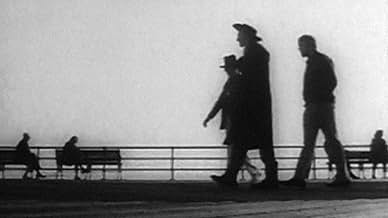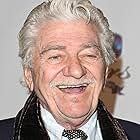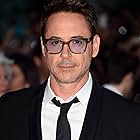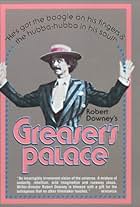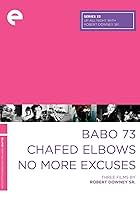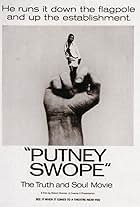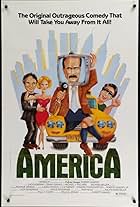After having comparatively mainstream success with PUTNEY SWOPE, POUND and GREASER'S PALACE, it is somewhat ironic (and somehow poetic) that Bob Downey made a picture that is a return to the underground: with a narrative that almost defies description, and that it had only been screened a handful of times before disappearing.
This is a collage film in the most obtuse sense of the word... half-baked sketches and unfinished story ideas are chopped up further, mixed in with each other, so as to make even less narrative sense than they already do! In a few minutes of screen time, we see a restaurant skit, people asking for directions to "Jive", a guy on a roof talking to God, people on a park bench, and then we will refer back to more snippets of these scenes, in whatever order. For the most part, this film (presumably) exists as a valentine to Elsie Downey, who, as in her previous film for her husband (CHAFED ELBOWS) plays several characters. Downey's voice rhapsodizes his love for her in the opening credits, in his own brand of wild beat poetry, and throughout Elsie (or, L.C.) is a woman for all men, as a frequent motif is her constantly being chatted up by two-bit hustlers.
Yet when you think that this movie is completely incomprehensible, one begins to see a thread of logic here. A line uttered at the end of one scene has a response to it in the next segment which for all we know, could have been shot years and miles away.
Plus, this film crassly reminds you of how artificial the movie world on screen really is, with a kitchen posing as a restaurant (with piped-in crowd noise), a half-finished spaceship set (which also has a janitor... more than the Enterprise had), and people in paper wigs coming out from the hair dryer. Perhaps the most pivotal moment on screen occurs when characters storm the editing room, much to the surprise of the editor crouched over the Moviola and shout: "Haven't you made up your mind yet?"
Thus, one realizes what perhaps Downey is up to... he is trying to create a jazz improvisation with fragments of film, where each scene is a phrase, and thus tries to make endless "call and response" variations with them.
Amidst this picture's few screenings, it was also titled TWO TONS OF TURQUOISE TO TAOS, which refers to a throwaway line in a throwaway scene with some guys (who have seen way too many Leo Gorcey movies) in a pseudo-gangster plot. Similarly, MOMENT TO MOMENT also refers to a throwaway line in the opening of the movie, but it perhaps makes the most sense in describing this movie. All of these moments from different times are cut together, to simulate the appearance that they are all happening simultaneously... without beginning and without end.
But of all things, MOMENT TO MOMENT ends up being quite a moving experience... it is a return to Downey's roots, and a deeply personal movie. With a beautiful score by David Sanborn, it is a shout for artistic freedom (no matter how demented the artist's vision is), done with an uncompromising structure, made years after such a thing was fashionable. As with all of Downey's films, this certainly isn't for everyone, but if one hangs in there with it a bit, one begins to see the beauty and logic underneath.






